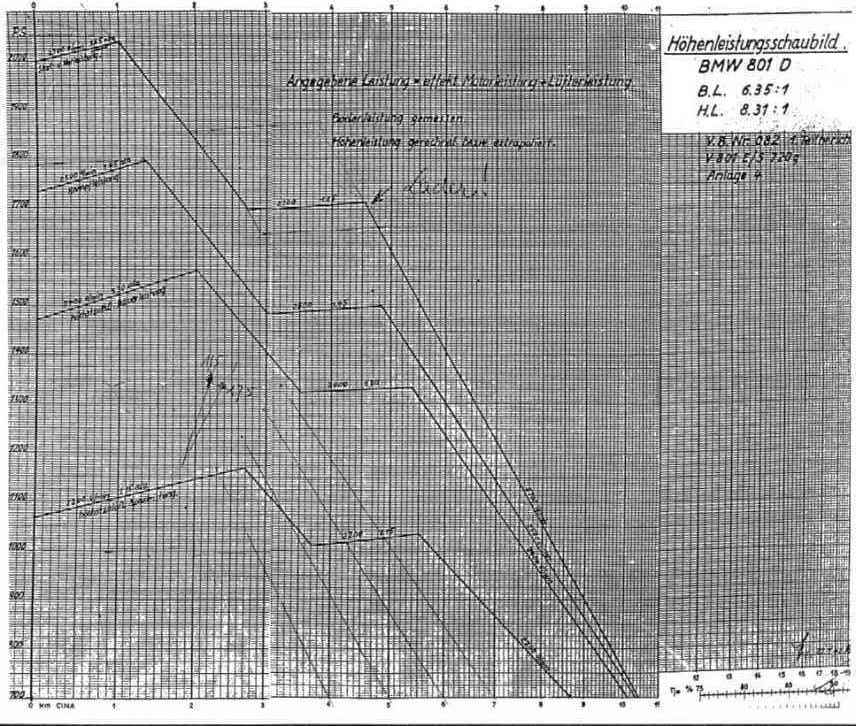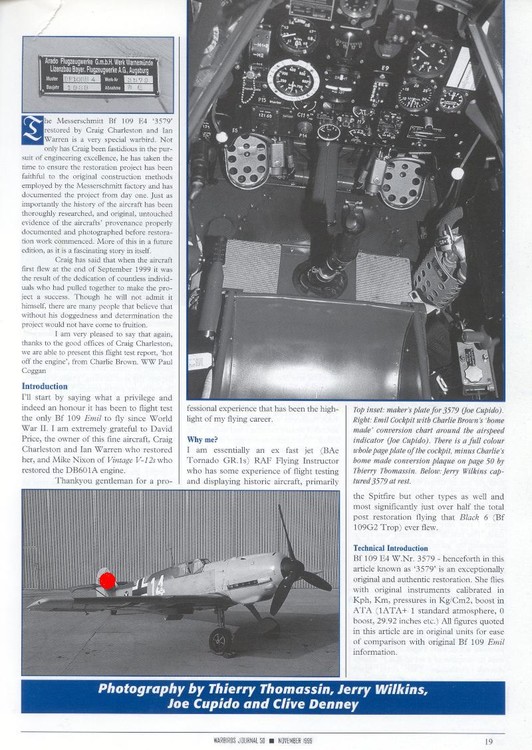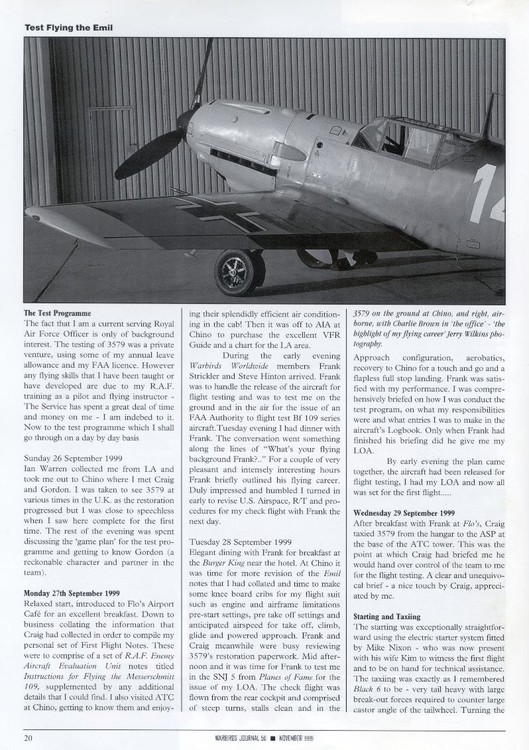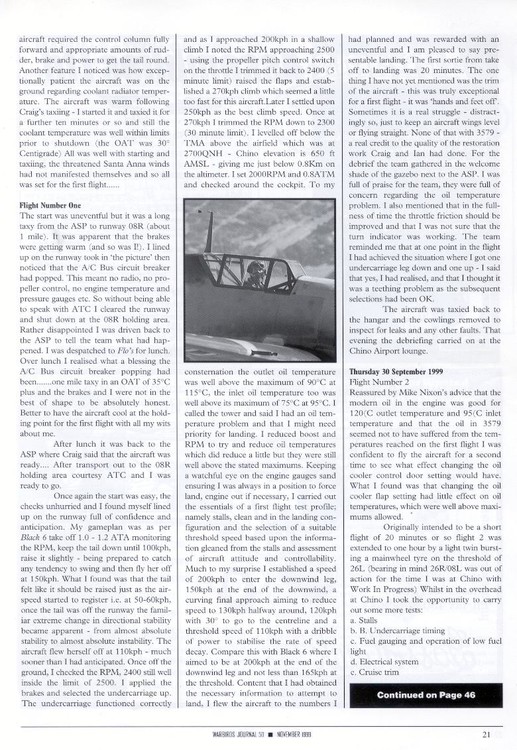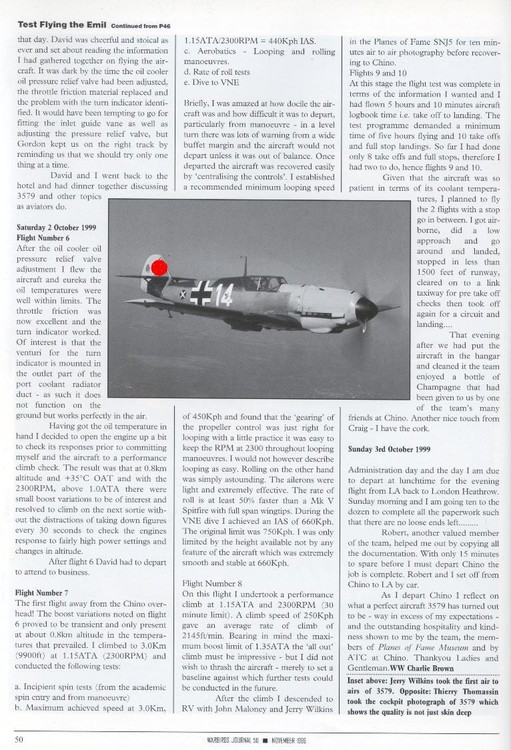

Crumpp
Members-
Posts
1593 -
Joined
-
Last visited
-
Days Won
3
Content Type
Profiles
Forums
Events
Everything posted by Crumpp
-
And what does your math say?
-
:thumbup: You can read the attached article and see how many design changes had to be made to the Merlin series to raise the Manifold pressure from +12lbs for 5 minutes to +18lbs for 5 minutes. The changes are not excessive or unusual. It is a typical engineering process. When you consider the engine was designed to run at maximum continuous (100% design power) at +4 1/2lbs...+18lbs is four times what it was originally design to produce (400% overload condition). In the BMW801 we see the same thing. The engine was designed to run at 1.15 ata (100% design power) and ended up at 1.82ata or 1.6 times. The BMW801 started with higher compression ratio so even though it seems less stress than the Merlin series, it is not. I attached a curve from the BMW801D2 development. It represents power capability at 1.65ata. Both engines were developed to their potential and required a lot of engineering changes to get there. merlin-lovesey.pdf
-
I got the report, it is in my files somewhere. They also changed the piston design as part of the BMW801 series. The pistons developed for the S series ended up being incorporated in the production BMW801D2 and are part of the design changes required to raise the manifold pressure to 1.58ata/1.65 ata.
-
:thumbup: Yes, Thank you Yo-Yo for knowing what you are doing as well as being forthright when mistakes are found.
-
Yes, that is one of the design changes of the BMW801 series. The BMW801D2 combined cylinder's 9 and 10 (IIRC) exhaust nozzles. By separating them and easy redesign of the exhaust nozzles, the BMW801S series was able to add ~100Kg increase in exhaust thrust.
-

Ground Handling / Tail Wheel and Rudder
Crumpp replied to Captain Orso's topic in DCS: P-51D Mustang
Humor....You always see "that guy" online racing around on the ground until the column of smoke appears to take his place. :smartass: -
Here is the B-26 Marauder Historical Society. http://www.b-26mhs.org/
-
Definitely. It would be nice to see a Ju188 or He177. Both participated in the last large scale bomber offensive by the Luftwaffe against England in 1944. http://www.pilotfriend.com/photo_albums/timeline/ww2/Junkers%20Ju%20188.htm http://www.warbirdsresourcegroup.org/LRG/he177.html We need some tactical aircraft too. I would love get a DCS quality FW-190F8 or FW-190F3. Found some "first's" for the B-26! http://www.b26.com/page/b26_history.htm
-

Ground Handling / Tail Wheel and Rudder
Crumpp replied to Captain Orso's topic in DCS: P-51D Mustang
I find the ground handling for both the FW-190 and P-51 to be spot on. They both taxi very easily if one uses standard taildragger techniques. You do not need a lot of power to taxi. Unless you want to make a sharp turn, keep the stick back at all times. When you use differential braking do not forget to tap the brake on the opposite side of the turn to stop the turn. It cannot be said enough in a taildragger....keep the stick back at all times. If there is wind, do not forget to add wind corrections. The basic rule is hold the stick, put your thumb up and point it downwind. Do that until the aircraft wants to taxi straight instead of being blown off course. Taildraggers are flown from the tie downs to the tie downs. Keep your speeds slow and controllable. With a little practice, you will be racing all around the airfield in no time. :thumbup: -
In conclusion......Yo-Yo is correct. By your estimation exhaust thrust accounts for a 14% increase in climb performance. So, Focke Wulf's estmate of 22.9 m/s without exhaust thrust and ballparking your 14% increase means ~26 m/s. And the engine produced ~2250hp in the first gear and 2150 in the second gear. I used the 2150hp for my estimate. The fact you have removed exhaust thrust from your estimate and when you add it to your C++ simulation it equals Focke Wulf's estimate without exhaust thrust is telling. Probably something else going on with your simulation or assumptions, Pilum. If you would share the formula's you are using, we might be able to solve it and help out. :smilewink: Leaving it out would ensure your estimate is conservative and hits the 10% performance variation range Focke Wulf, GmbH guaranteed by contract to the customer.
-
In CW rotating propeller, everything is trying to go left. The rudder in a taildragger is useless at taxi speeds. It takes considerable power for the aerodynamic forces to move the aircraft based on rudder input. In order to get enough propeller blast over the rudder and generate enough aerodynamic force usually means the tail will lift. Not only is that very hard on the brakes to keep the aircraft under control with all that additional power; you are risking a prop strike if the tail comes off the ground. Relax that back pressure to unlock the tailwheel and the airplane will plant the propeller in the dirt. Heat your brakes enough and you will lose them. The Bf-109 is tail heavy at taxi. That means braking power is good but you might have to add a tiny bit of power to lighten the tail and stomp on the rudder to unlock the tailwheel when the castor angle is extreme. That means when the tail wheel is opposite the direction you want to turn, you going to need a little power to get to flip around and go the direction you want to taxi. The Bf-109 is a typical taildragger in that the speed range the braking power is designed to be effective for directional control overlaps the point the aerodynamic forces come into play allowing the rudder to be effective for directional control. A few airplanes do not do this but they are rare. The T-6 comes to mind and is a scary airplane for a few moments on take off or landing as you have no directional control until the speed changes.
-
Exactly. A long time ago in a galaxy far far away when the ink was still wet on my PPL I went flying with a World War II vet. The guy flew C-47's over the Hump in Burma/China. During the flight, he turns to me and says, "Your instructor flew tricycle gear aircraft all the time. How can I tell, your feet are lazy." It was true on both counts. He then showed me what "right" looked like and the difference was dramatic. Thanks for the additional knowledge, Jcomm. It works in DCS for all of the them, IIRC. The P-51 rudder trim can hide some of the rudder effects in DCS. Without a buttocks to airplane interface, that rudder trim screws me up sometimes!
-
Me too. I just don't care for the fuel threads that will be coming with a B-25 in the 2nd TAF... :smilewink:
-
I think the motivation is clear for the B-25 and the 2nd TAF...... :music_whistling:
-

Show me your mad dogfight skills (FW190D9 Version)
Crumpp replied to super_baloo's topic in DCS: Fw 190 D-9 Dora
Glad to hear it, Fasteddie1! Pedals are the way to go for sure. Can you do me a favor and post in the thread to let others know? I don't think many people are paying attention to it because downloading the track and watching it is a pain. :( Look forward to seeing in the virtual skies! -
Exactly. The commonwealth and ????? Oh yeah...nobody else. I would rather see the Mossie for a daylight light bomber Commonwealth design. Save the B-25 for when the Zeke's and Wildcat's come out!! That is just my opinion.
-
Of course that does not preclude a B-25...I would pay for one!
-
That is nice. Obviously you would never twist anything I ever said. :music_whistling: I would point out the fact there were a lot more B-26's to be found AND the RAF operated almost as many B-26's as they did B-25's! It would serve equally well in all scenarios. :thumbup: http://www.39thsquadronmarauders.org.uk/page37.html
-
A colored chart and an unwillingness to discuss the theory/math behind it is neither math nor evidence. :smilewink:
-
That was my reaction too.
-
Because I have actually checked it out and ran the math? The track is in this thread Pilum. When the DCS model is flown as per the POH instructions for a climb it gives good agreement with the Kennblatt performance at Steig u Kampfleistung. That indicates that the FM parameters are good and any climb performance realized above that power setting is the result of the additional power of 1.8ata @ 3250 rpm with MW50. That is backed up by the math. If I ran the math and it was not in agreement, then I would be posting a thread asking why. I would also be able to back up my claim with the formula and theory I was using.....
-
http://forums.eagle.ru/showpost.php?p=2334212&postcount=7
-
Not really...in fact they are pretty common ones with new type development. Physics says it will be in the vicinity of this:

